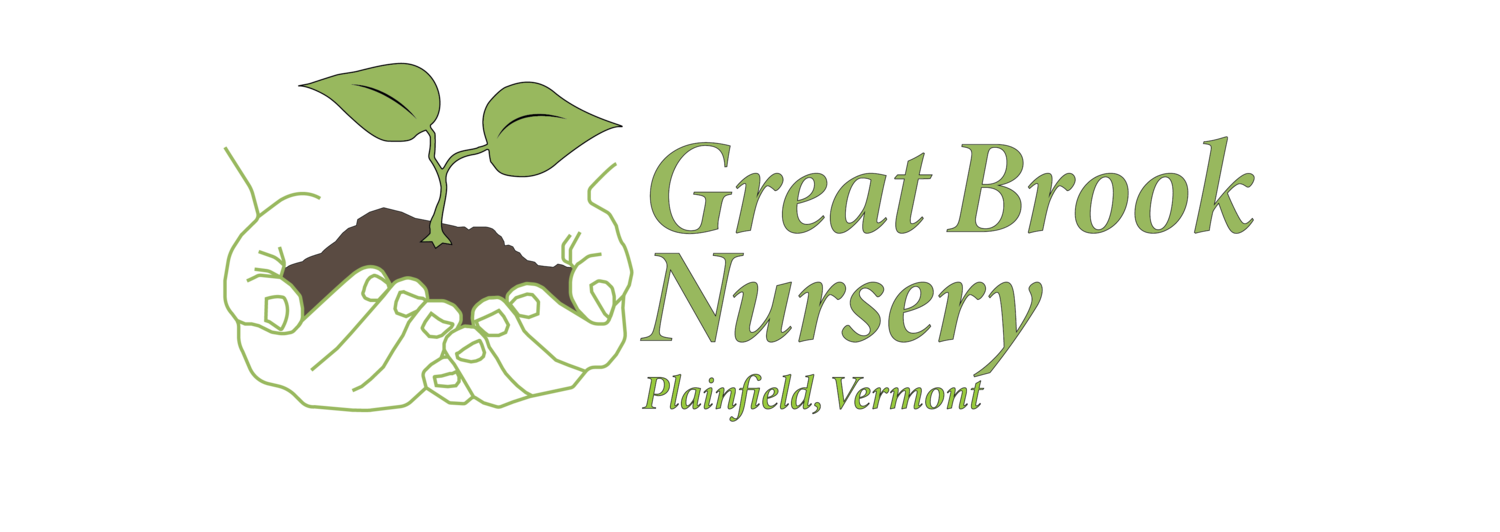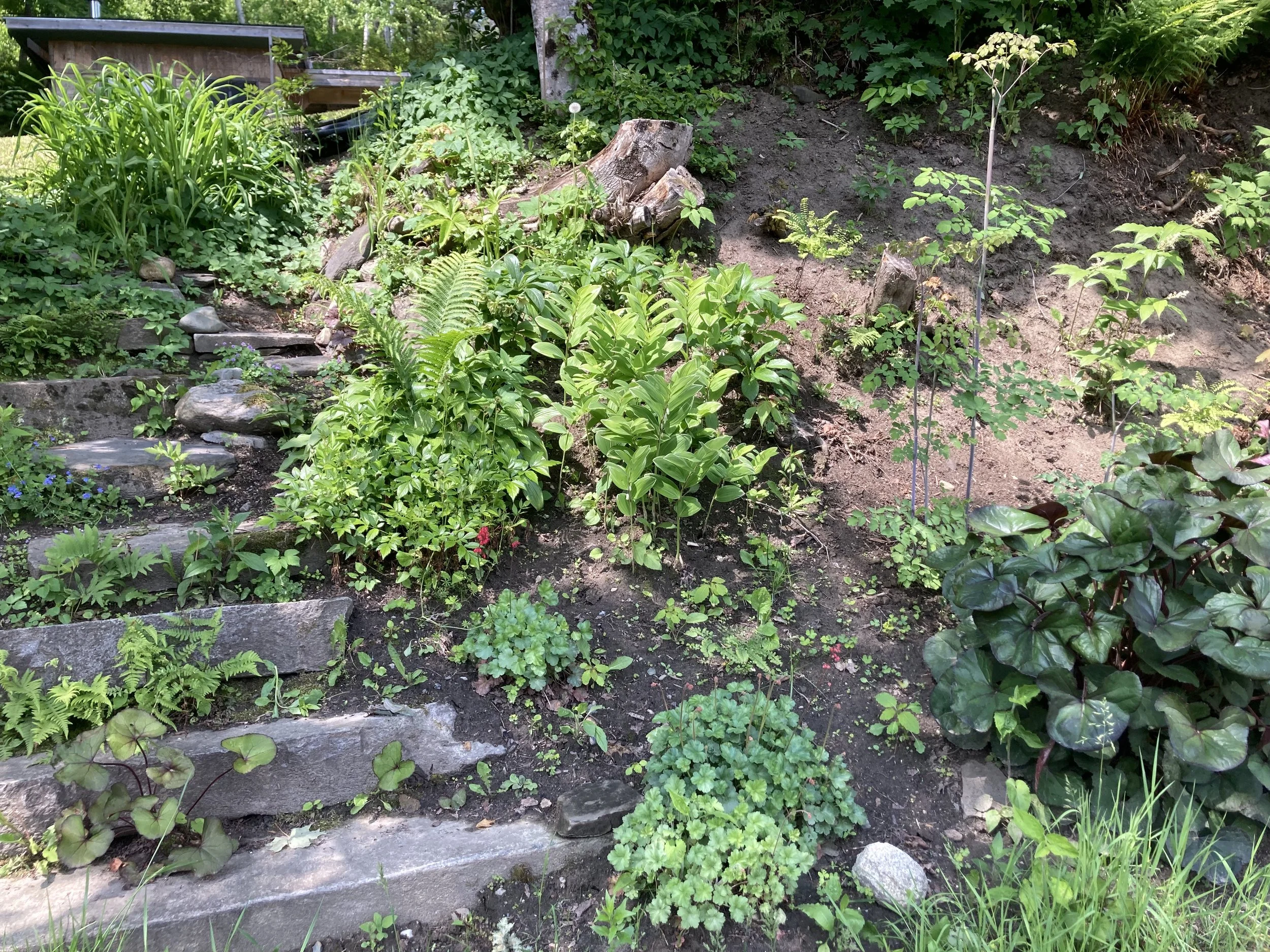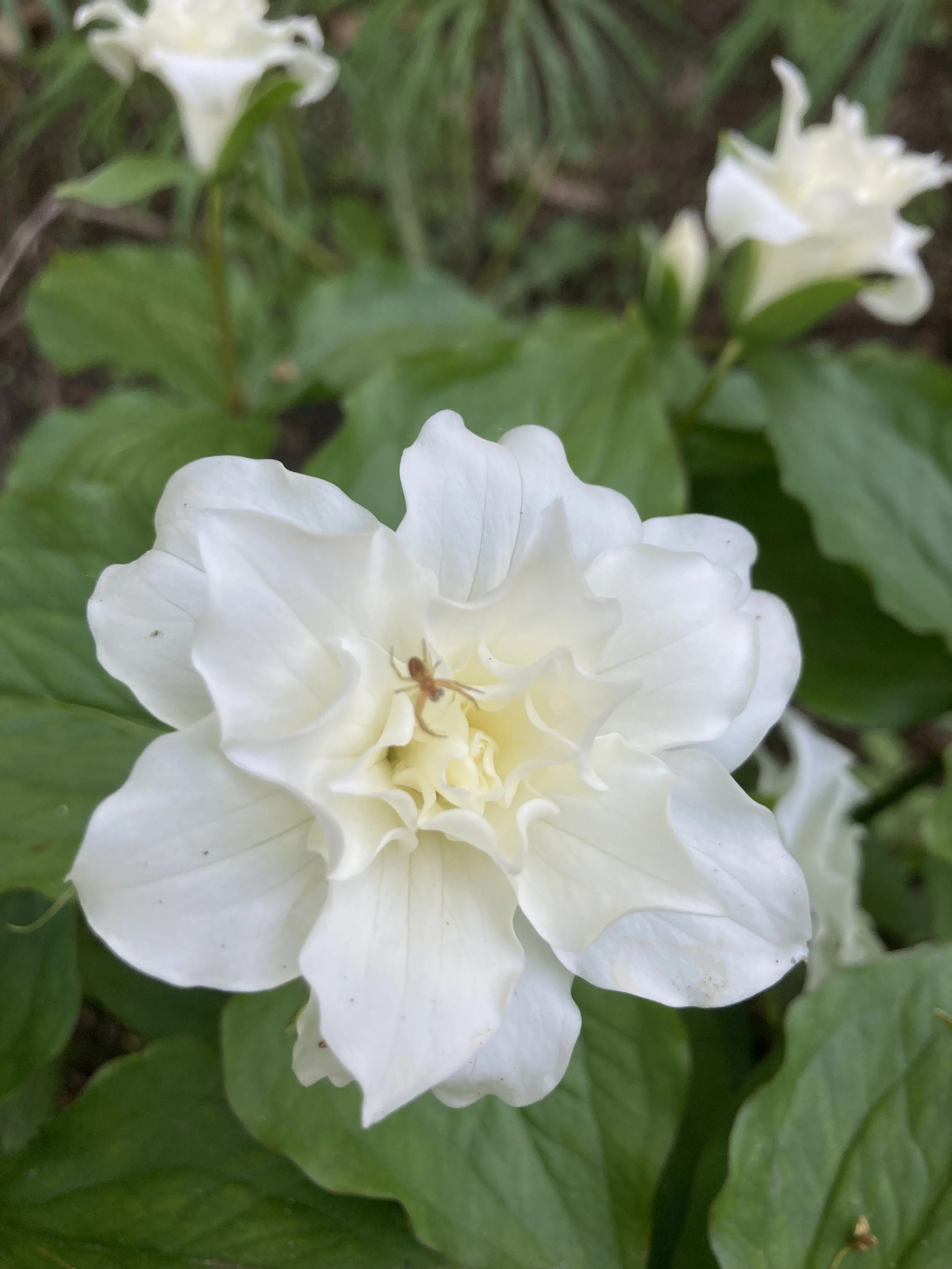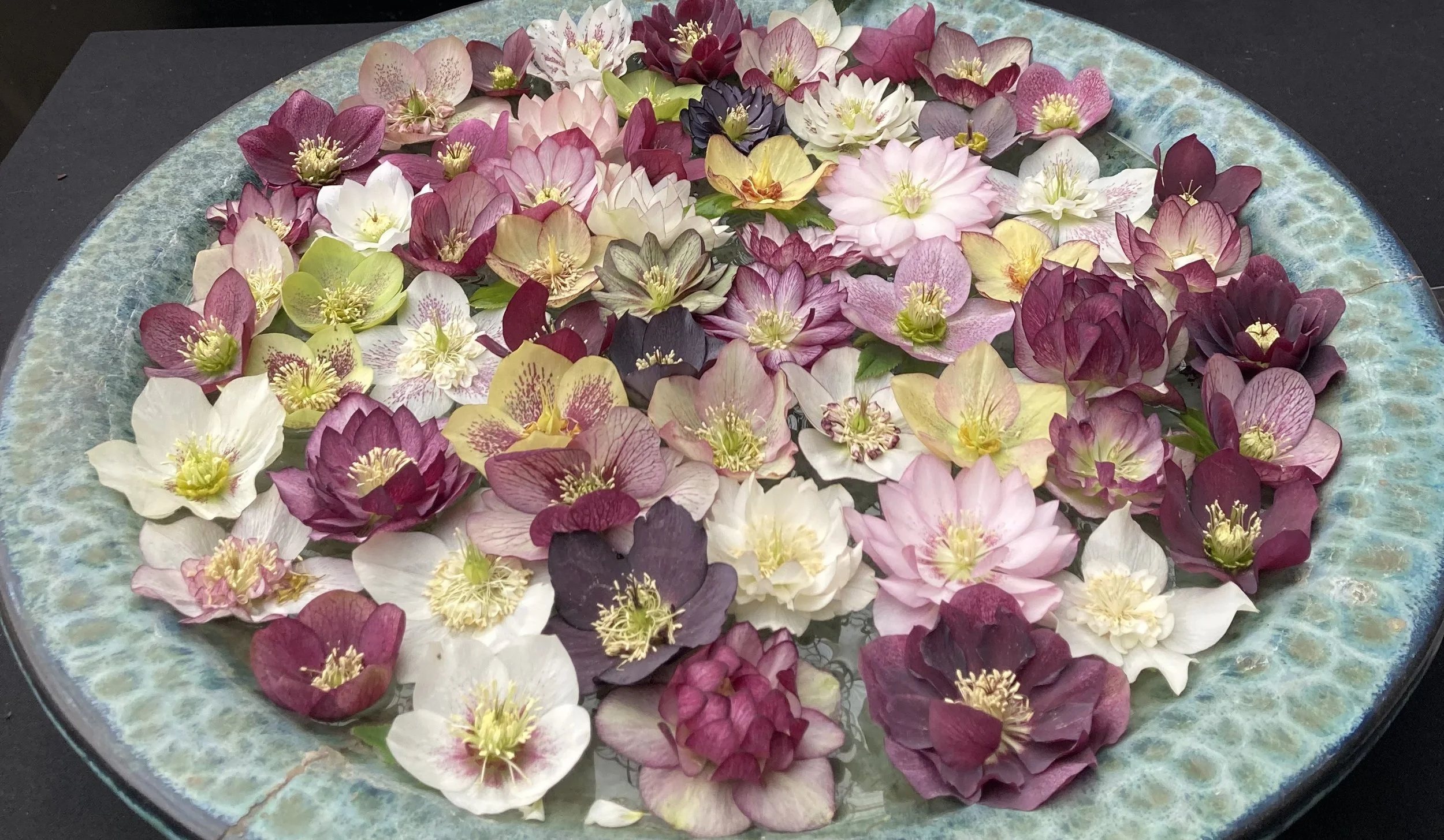Made for the shade
Plants for the shade and woodland garden
As our nursery has developed, we have found our site well suited to growing woodland and shade loving plants. The brook that runs along the property and an Eastern orientation keeps the nursery and gardens cool. This has allowed us to develop a unique collection of shade loving plants from around the world. We are excited to introduce to introduce our collection.
A quick peek at some of the shade plants we are excited to be propagating…
Glaucidium Palmatum - Woodland poppy
I first spotted this beautiful and uncommon woodland plant at Cady’s Falls Botanical Gardens in2019. I gathered seed and planted them that fall. I learned why it is so valuable and uncommon in the horticultural trade. It has taken five years to produce flowering plants from this slow growing and not easily dividable plant. This monotypic species from the mountainous woodlands of Northern Japan grows best in light shade and good rich soil. It flowers in the early summer with pink, and sometimes white, papery flowers on 2ft mound of beautiful, palmate foliage that persists all summer and produces nice seed pods in the fall. Glaucidiums grow very well at our cool site even with some morning sun. We are continually seed propagating and you will not find more robust specimens of this Asian woodlander easily available.
Daphne Mezereum
This spring flowering shrub is well known popping up here and there on the edges of woods and fields here in the northeastern US. Though not a native plant, it has naturalized sparingly in the landscape and is a welcome sight early in the spring. The light purple flowers appear before the leaves and can have a strong scent. The glossy leaves persist nicely all summer and are accented with red berries. The plant and especially the berries are poisonous to humans, but are enjoyed by our local birds. Grows nicely in dappled shade and rich soil. May benefit from added lime. We have some nice plants we propagated from wild seedlings.
Species peonies
Another top notch perennial we have been collecting seeds from at Cady’s Falls. The species peonies are an earlier blooming, single flowered species from the peony family that prefer a more shady location. Peonies have been cultivated in China for thousands of years. And the process continues, creating new, colorful, floriforous and patented varieties. The varieties we have been collecting are closer to the wild form, and not being a double flower, it produces a seed head in the fall from a colorful and ornamental seed pod. I have come to really appreciate these woodland species not just for the ethereal flowers that don’t flop over like the doubles and the strong and persistent foliage, but because it’s fun and inexpensive to propagate from seed. I collected my first handful of seed from Cady’s Falls in the Fall of 2019 and have continued each year since.
We are excited to have several varieties and species to begin offering. The white form, P. japonica from seedlings; the white P. obovata subsp. willmottiae; two yellow flowering species P. daurica subsp. wittmanniana and P. mlokosewitschii commonly known as “Molly the witch” or just “mollies”, for obvious reasons. There are more, and we look forward to increasing and expanding our collection of theses unique peonies.
The small picture is of Fall gathered peony seed heads from Cady’s Falls Gardens. These seeds need to be planted fresh and often take two winters to germinate!









